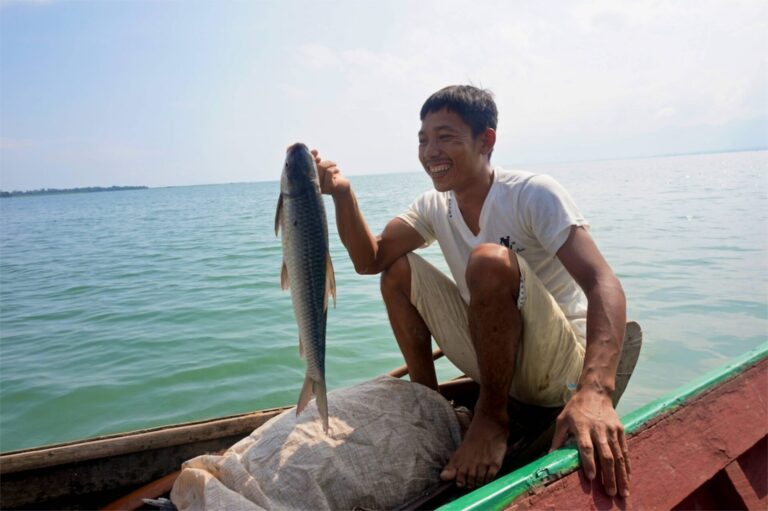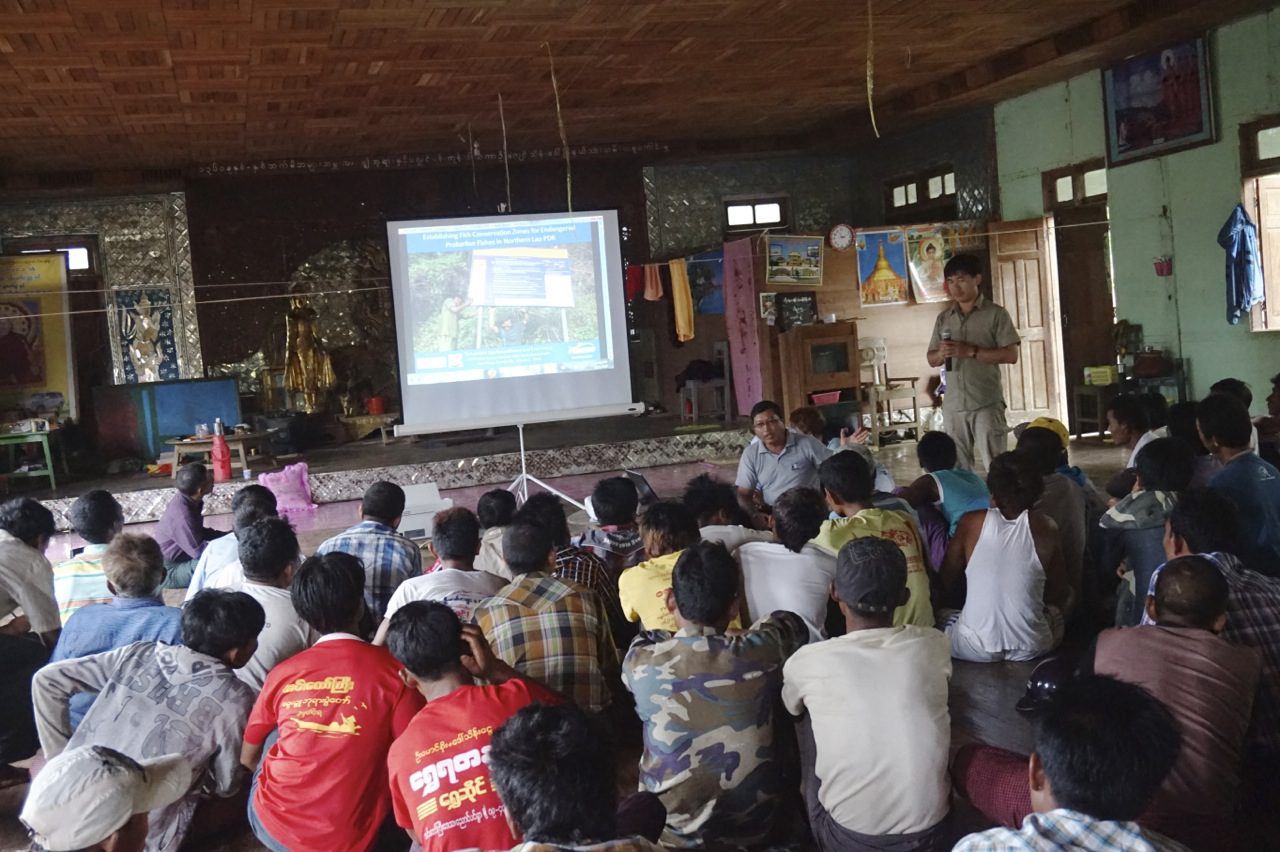Monday October 19, 2015

Earlier this year, FISHBIO staff traveled to a place few people have the opportunity to visit: Indawgyi Lake, the largest lake in Myanmar. Located in the remote reaches of northern Myanmar in Kachin State, Indawgyi is the second largest lake in Southeast Asia. The lake and its surrounding wetlands provide important habitat for nearly 100 bird species, and almost as many fish species that support fisheries for more than a dozen communities around the lake. The group Fauna & Flora International (FFI) conducted fish surveys in the lake and its surrounding watershed in 2013, and documented some 80 fish species, including a few endemic fishes thought to occur nowhere else. However, many fish stocks have declined in recent decades, prompting concerns about the future of fisheries in the lake. FISHBIO consulted for FFI on the establishment of Fish Conservation Zones (FCZs), or no-fishing areas, which are being pursued as one strategy to help fish populations recover.
Indawgyi Lake is part of the Indawgyi Wildlife Sanctuary, which is also home to dozens of communities that farm the surrounding land and fish in the lake. The lake has remained mostly free of large industries, although nearby gold and jade mining have raised concerns about sedimentation and runoff polluting the lake. Fisheries also face a host of other challenges. With the advent of motorized boats, fishermen can now travel farther to fish in parts of the lake outside their villages’ historic fishing areas. Gear types have evolved as well: the mesh sizes of fishing nets have shrunk from five-inch squares a few generations ago to one- or two-inch squares today. The smaller mesh sizes are less discriminate and catch many juvenile fish that have not yet reproduced. Fishermen also deploy thousands of shrimp traps around the lake, and these small boxes with fine openings catch many juvenile fish as well. Illegal elctrofishing methods also occur in the lake, and an influx of migrant fishermen from Myanmar’s Inle Lake, where many fish stocks have already collapsed, is putting increased strain on Indawgyi’s fish resources.
Regulating fishing practices is one strategy to try to address these threats. Just as FCZs have become a popular tool for managing fisheries in Laos, a complex landscape of FCZs exists in Indawgyi. This includes historical FCZs recognized by the Fisheries Department that were established during the time of British rule in Myanmar before 1948. In more recent years, a local organization Friends of Wildlife worked with many communities around the lake to establish FCZs with support of the Forestry Department, and FFI is currently proposing new FCZs to protect recently described endemic fish species. While FCZs have great potential as management tools, they are only as good as their enforcement. Some communities are still trying to enforce the FCZs established by Friends of Wildlife, but wish for more support from government officials. The concept of community fisheries management is still relatively new in Myanmar, and FFI is working with government officials to establish a legal framework that would give the communities the ability to manage their local fisheries resources.
During our visit to Indawgyi, FISHBIO staff attended community meetings with eight villages around the lake and shared our experiences working with communities in Laos to establish FCZs. We also provided examples of FCZ regulations drafted by Lao communities to inform the development of village FCZ agreements in Indawgyi. We trained local FFI staff in how to conduct fisherman interviews and collect basic fisheries information, and provided a format for community workshops. We also provided general advising about the development of an FCZ zonation plan, alternative livelihood development for fishermen, stakeholder collaboration, and FCZ demarcation and enforcement. We are excited to be participating in our first project in Myanmar, and look forward to making a second visit to Indawgyi next year to monitor the enforcement activities of these FCZs.
This post featured in our weekly e-newsletter, the Fish Report. You can subscribe to the Fish Report here.

